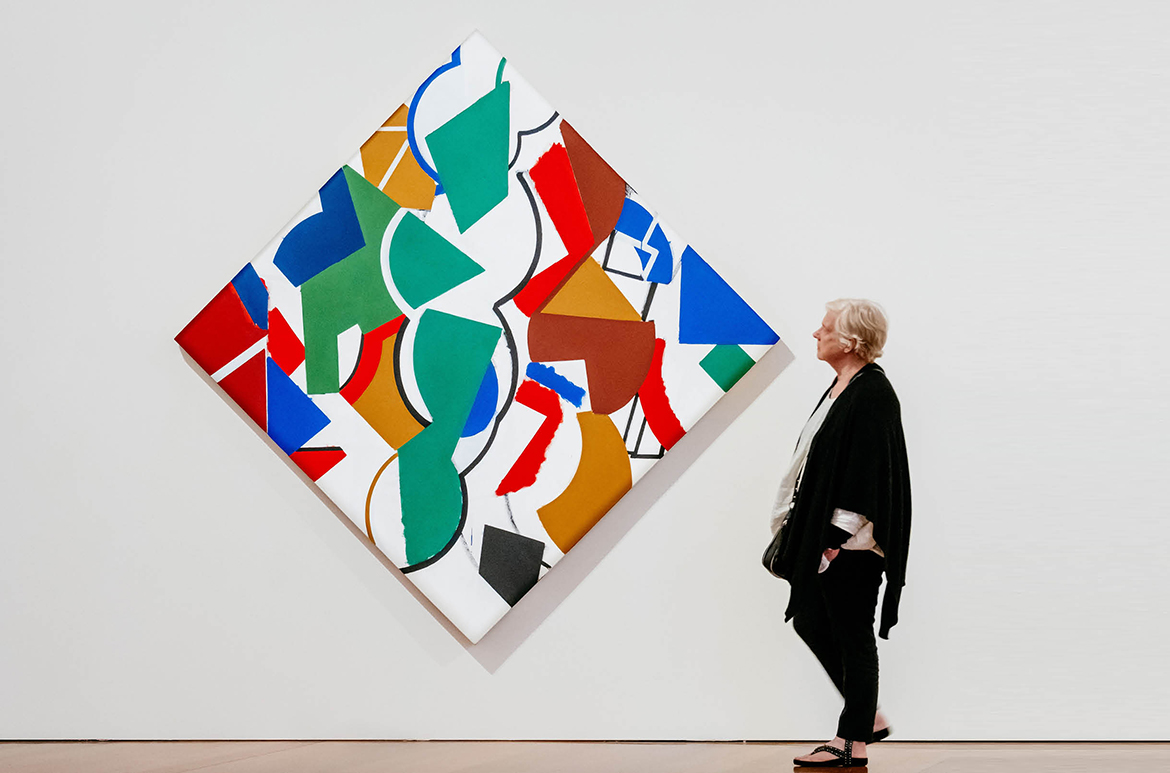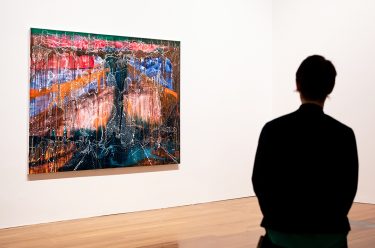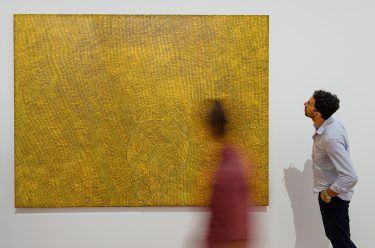‘Courage and Beauty: The James C Sourris AM Collection’ presents heady themes and concepts: the illusion of perspective and the transcendent picture plane; the burdens of oppression; a growing plurality in society and the possibility of more complex identities; the potential for colour and materials to make symbolic allusions to place and to inspire emotional connections; and the potential of experimental approaches to art-making.
DELVE DEEPER: Transcendental views
DELVE DEEPER: The symbolic potential of colour, shape and gesture
The exhibition at the Gallery of Modern Art until 25 June 2023 is curated in three strands — Transcendental, Symbolic and Elemental. Here we profile the Elemental strand, the last of our three-part series.
A new era of elementary forms
The works in the last grouping of ‘Courage and Beauty’ are resolutely abstract. Responding to changes in technology, many demonstrate a mechanical character. The National Gallery of Victoria’s influential exhibition ‘The Field’ (1968) has been a touchstone for this strand of James C. Sourris AM’s collecting. ‘The Field’ popularised a new style of painting and sculpture based on hard-edged forms that rejected representation, and embraced bright flat colours made possible by advancements in industrial paint manufacture.
Dick Watkins ‘The Mooche’
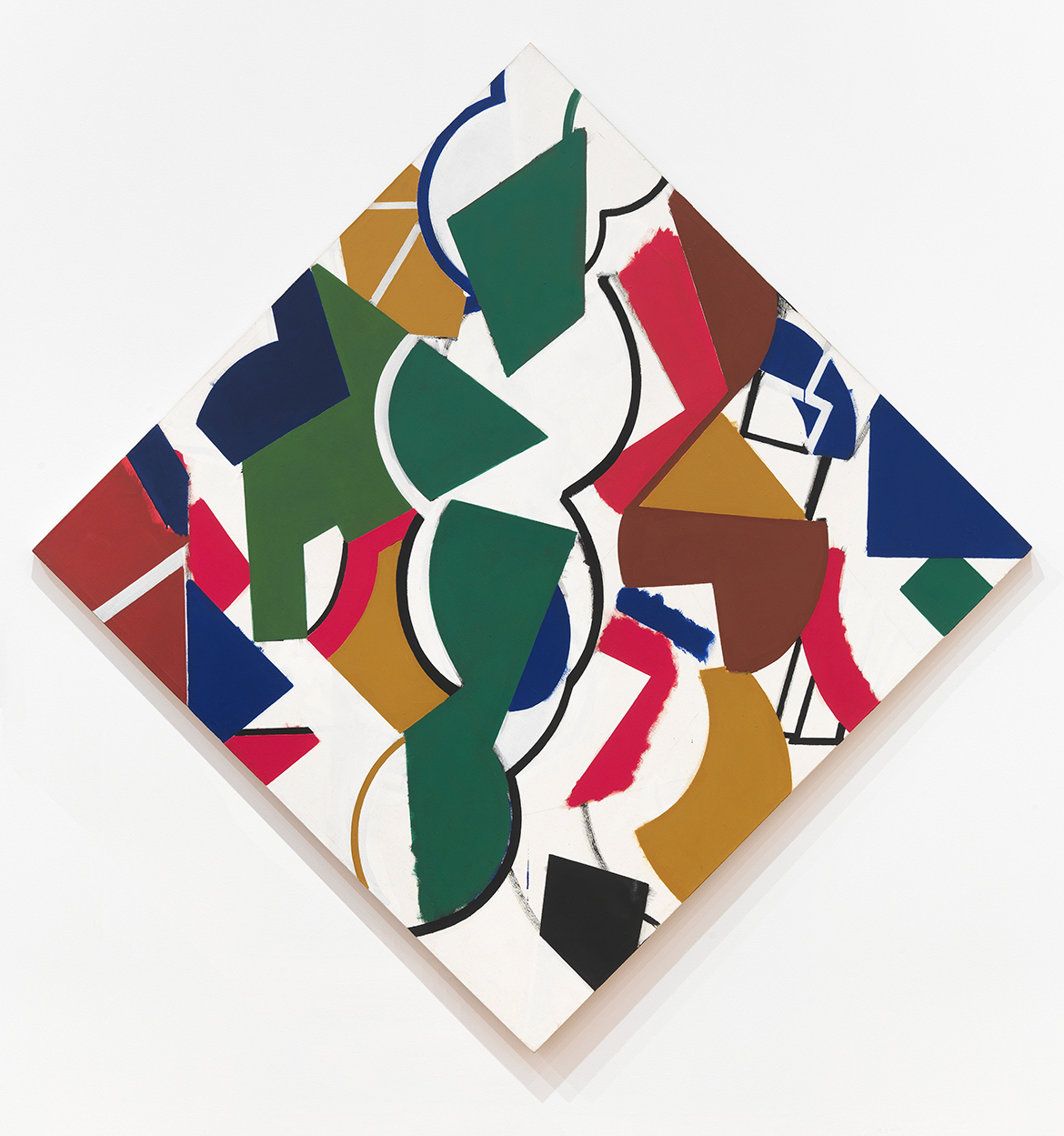
John Peart ‘Shoot point’

Robert Rooney ‘Canine capers VII’

Normana Wight ‘Untitled yellow-green’
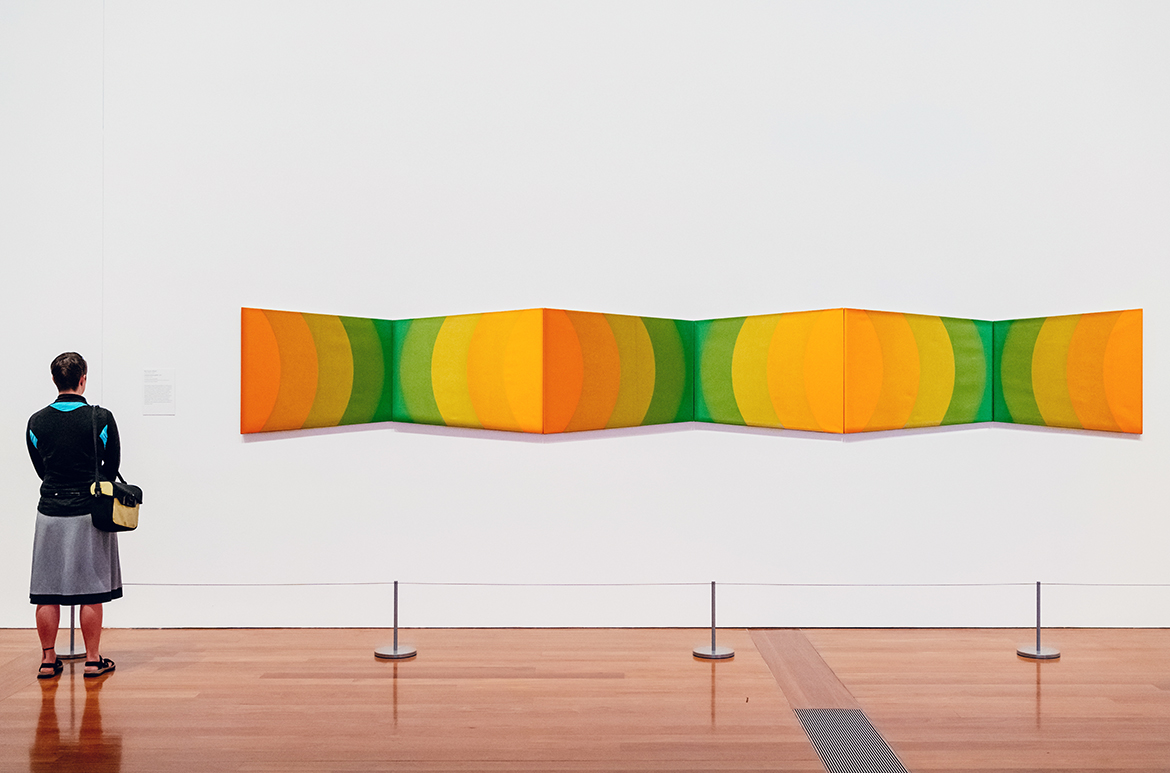
Dick Watkins’s The Mooche 1968 (illustrated) featured in ‘The Field’ and was among the most lyrical paintings of the exhibition. Other alumni of ‘The Field’ whose works are on display here include Robert Hunter, Nigel Lendon, John Peart’s Shoot point 1967 (illustrated), Robert Rooney’s Canine capers VII 1969-79 (illustrated) and Normana Wight’s Untitled yellow-green 1970 (illustrated).
Other artists who have also embraced technology to expand their practice include Howard Arkley, represented here with his early abstract painting Organic Model F (Liquid) 1976 (illustrated). Employing an airbrush to apply his black calligraphic forms, Arkley explores the potential of an industrial technique in the realm of the fine arts.
Peter Kennedy also routinely investigates the new aesthetic dimensions of changing technologies. His Neon light installation #1 1970 employs the radiant qualities of coloured light spilling onto the gallery walls and floor to explore the space between sculpture and installation, object and architecture. Similarly concerned with light and colour mixing, Ross Manning’s Ambient painting #1 2018 responds to the ubiquity of digital technology in our contemporary environment, which is saturated with electronic images.
Lastly, Peter Cripps is known for his intellectually driven practice. His works often invoke architectural function and reveal his longstanding interest in the culture and history of art museum display and exhibition-making.
Howard Arkley ‘Organic Model F (Liquid)’
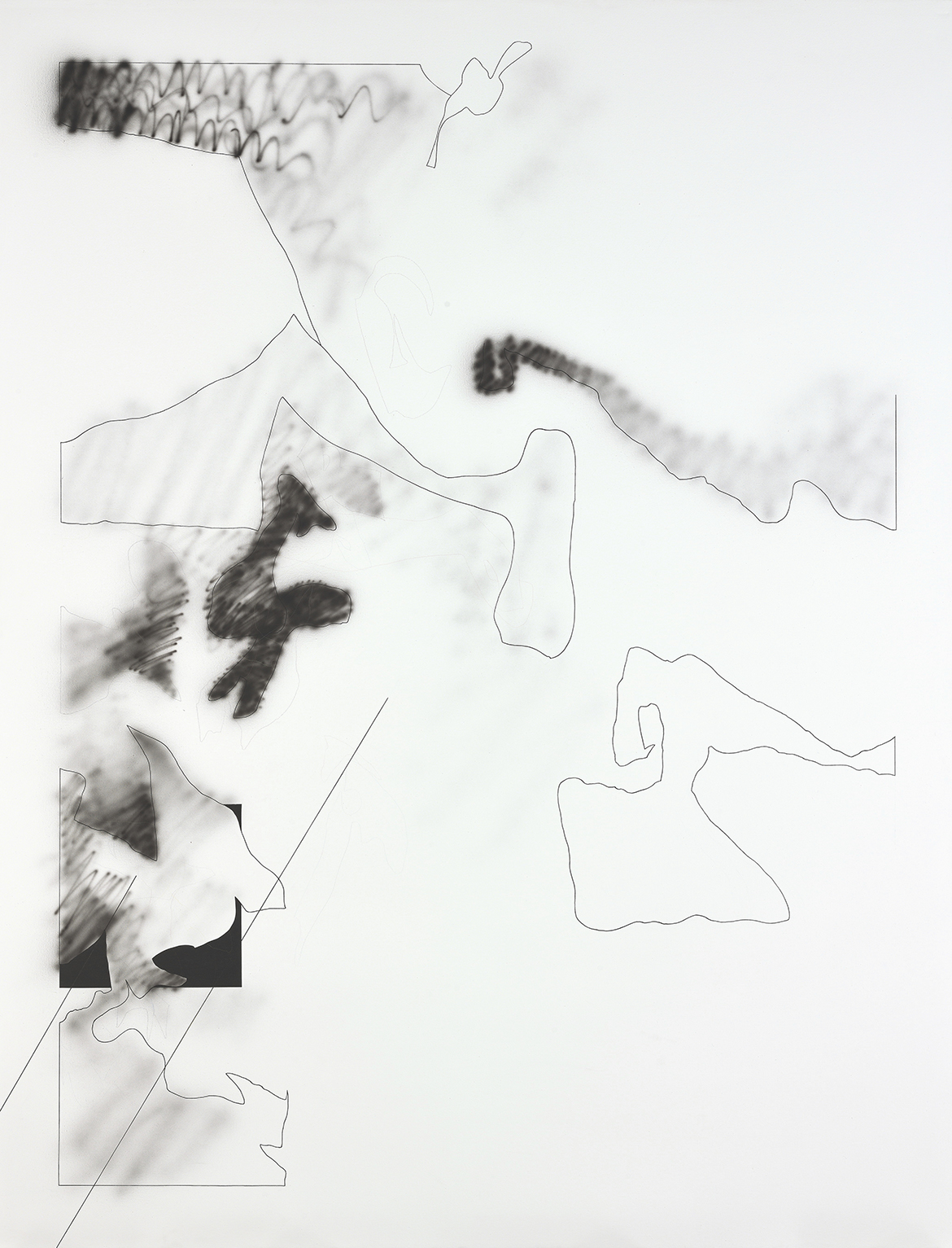
Ross Manning ‘Ambient painting #1’
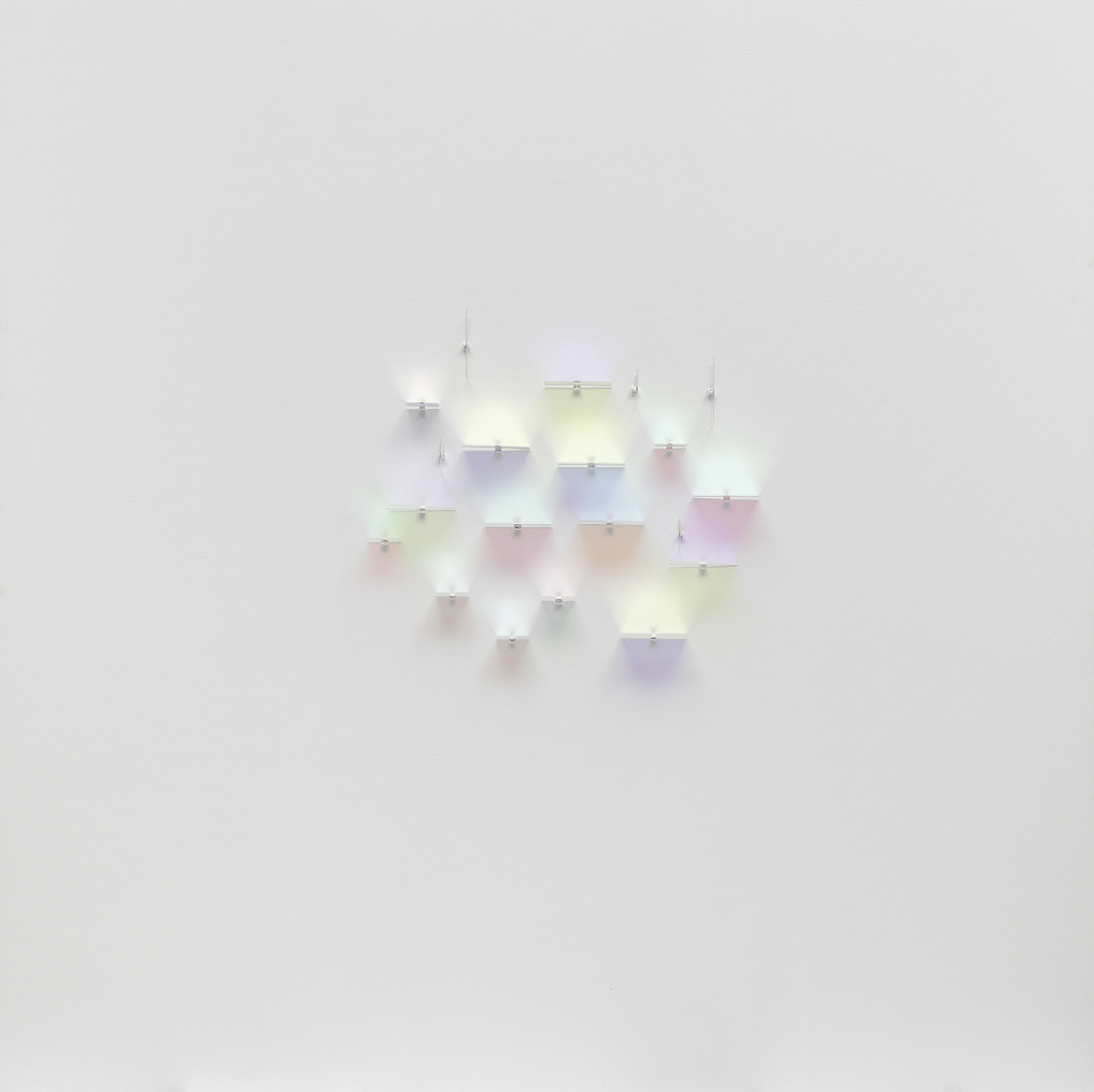
Given the title of the exhibition, we might be inclined to group the works across a strict divide of courage and beauty; however, it is the spillage and slippage across these categories that animates each work. What strengthens them as a collection is their demonstration that beauty can be understood in displays of courage, and courage can be derived from an internalisation of beauty.
Looking back over 20 years, the growth of both collection and collector is plain to see. It is a growth of vision and insight that, in the case of James C. Sourris AM, is to be generously shared with us all.
Peter McKay is Curatorial Manager, Australian Art.
The accompanying publication Courage and Beauty: The James C Sourris AM Collection is available at the QAGOMA Store and online.
‘Courage and Beauty: The James C Sourris AM Collection’ / Marica Sourris and James C Sourris AM Galleries (3.3 and 3.4), Gallery of Modern Art (GOMA) / 3 September 2022 to 18 June 2023.
Featured image: Dick Watkins The Mooche 1968 / Photograph: J Ruckli © QAGOMA
#QAGOMA
